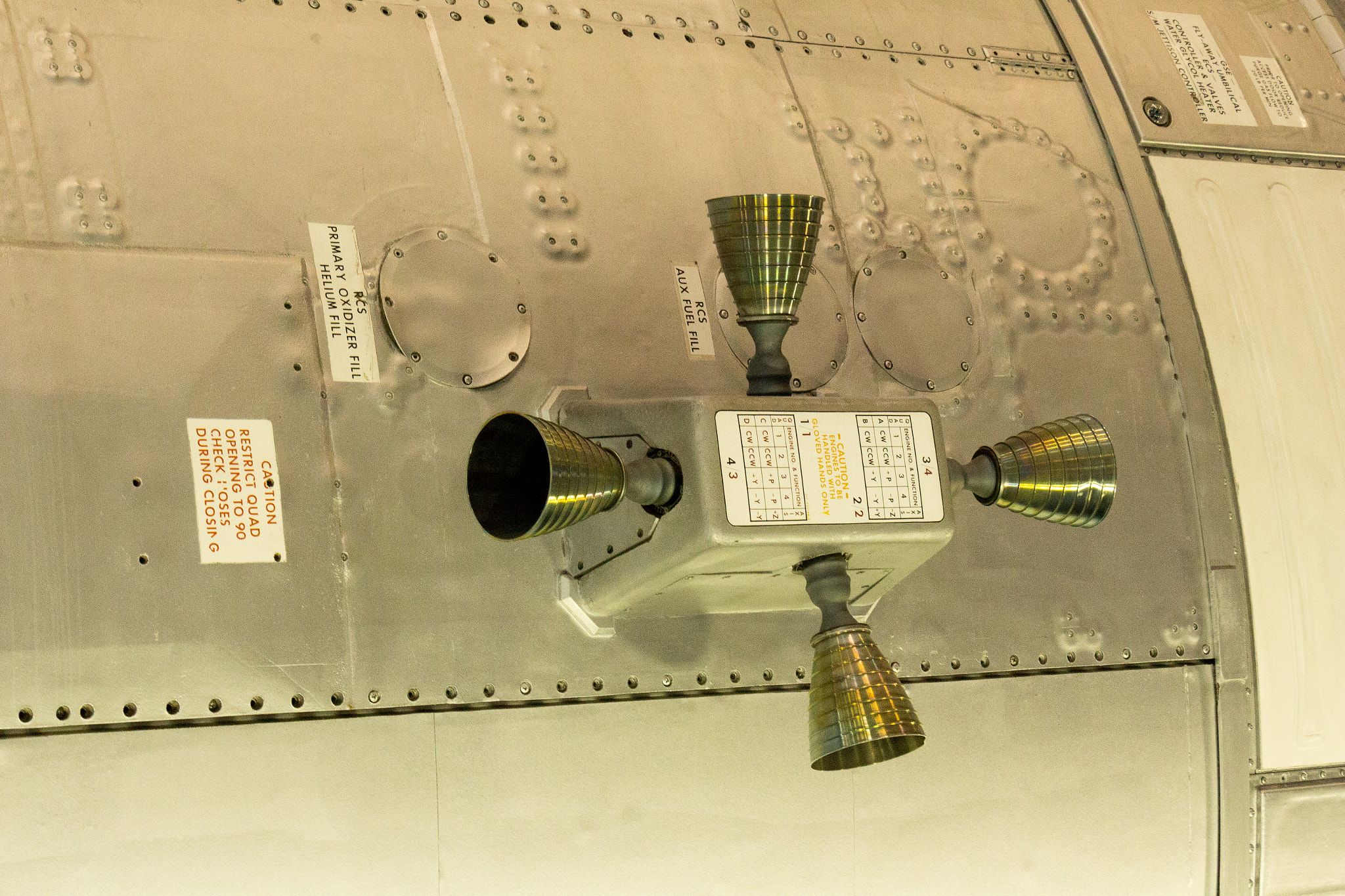Journal Entry 13
Date: 2025-05-03
Activity: Rework radar and movement internals, add thruster sounds, minor other polishes
Time spent:
- Radar clustering - 1 hrs
- LPF, HPF to indicate front-back axis - 20 mins - FAIL
- Add main thrust - 5 min
- Source RCS and main engine SFX - 5 mins
- Rework movement internals to allow for easier thruster sound generation - 2 hrs
- Different rotation force between using RCS and using the main engine's gimbal - 5 mins
- Final polishes, build - 10 mins
Today I did quite a lot of work on making existing features work better / better integrate with future updates. The radar clustering I mentioned in the previous devlog seems to work like a charm -- playing in the web browser now has a very clean sound without any unwanted distortions. The majority of my time was spent reworking the way the game registers movement inputs -- instead of applying forces directly, pressing a key and letting go now turn on and off (respectively) "thrusters," represented by Vector3Ints and one bool for the main engine. This way makes it easier for sound to be added to individual thrusters, adding to the game's juice and auditory feedback.
I added sounds to the RCS thrusters (RCS stands for Reaction Control System, and they are tiny multi-directional thrusters on the sides of space vehicles that allow them to make small adjustments to their movement and rotation), and to the main engine. Both are sourced from freesound.org, the RCS thrusters are just white noise licensed under CC0, and the main engine is a recording of an air vent by the user primeval_polypod, licensed under CC Attribution 3.0.

I also added a second rotation force that simulates the stronger effect the main engine gimbal would have on the ship's rotation. One mistake I made though, that I realised after building and publishing the snapshot, is that the main engine gimbal can't in reality contribute to roll. I will try to fix this tomorrow, probably by separating the rotation axes and only applying the stronger force to pitch and yaw.
Another thing I want to take a look at tomorrow is the force of a collision with an obstacle. So far I haven't been able to find how to detect this force, but it would be really useful to know, be it for affecting the volume of crash sounds (and maybe even triggering different crash sounds based on the force in the future), and also for determining the amount of damage the ship should take, when I implement that.
I would also like to finally finish implementing target objects and move onto level design, which has been my goal for several days now, but I haven't had the chance to get to it yet.
One idea I got today was that the graphics of the game could simply be visualisations of the sound being generated. This way, sighted players wouldn't really have much of an advantage over blind players, while keeping the game visually interesting (dare I say, even more interesting than if the graphics were normal renderings of the 3D world), and at the same time keeping the game accessible to players with hearing loss and/or inadequate audio equipment. I will probably not start implementing this tomorrow, but it is something I would like to take a look at sooner, rather than later, to have more of a guarantee I will be able to finish this feature before the deadline.
Files
Get Project C
Project C
Next Target: Mothership
| Status | In development |
| Author | Rosie |
More posts
- Journal Entry 2841 days ago
- Journal Entry 2743 days ago
- Journal Entry 2644 days ago
- Journal Entry 2545 days ago
- Journal Entry 2447 days ago
- Journal Entry 2348 days ago
- Journal Entry 2249 days ago
- Journal Entry 2150 days ago
- Journal Entry 2051 days ago
- Journal Entry 1952 days ago
Leave a comment
Log in with itch.io to leave a comment.